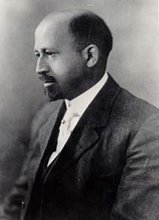According to the February 23 report, “Hunger in America 2006,” a study commissioned by America’s Second Harvest Network, an organization representing some 200 food banks and food rescue groups, more than 25 million people, or about 9 percent of all Americans, receive food assistance on an emergency basis. This growing army of poor and hungry includes nearly 9 million children and 3 million seniors The overall number of those seeking help at food banks and soup lines has swelled by 8 percent since 2001, and 18 percent since 1997....
Hunger in America: 25 million depend on emergency food aid
By Alan Whyte
9 March 2006
The brutal impact of social polarization and the protracted assault on the living standards of broad masses of working people was reflected in two recent reports documenting the deepening crisis of hunger in America.
According to the February 23 report, “Hunger in America 2006,” a study commissioned by America’s Second Harvest Network, an organization representing some 200 food banks and food rescue groups, more than 25 million people, or about 9 percent of all Americans, receive food assistance on an emergency basis.
This growing army of poor and hungry includes nearly 9 million children and 3 million seniors The overall number of those seeking help at food banks and soup lines has swelled by 8 percent since 2001, and 18 percent since 1997. The study was based on 52,000 interviews with people requiring emergency food and on a survey of 30,000 local emergency hunger-relief agencies.The report found that about 66 percent of those needing food are living below the official poverty line—$15,670 per year for a family of three. The average annual household income of those individuals and families seeking food assistance is only $10,320. However, 10 percent of all adults had no income at all, which is a 37 percent increase in this category since 2001.Another large share of those seeking assistance is drawn from what is commonly referred to as the working poor. About one third of the adults between the ages of 18 and 65 needing emergency food aid are employed. Thirty-six percent of all families seeking assistance reported that at least one family member was working. One fourth of all households reported that a job was their primary source of income, followed by 20 percent who reported that Social Security was their primary source of income.
Half of all the households reported annual incomes of less than $10,000.The report examined the lack of resources for those seeking emergency food. Twelve percent are homeless, which is a 28 percent increase over 2001. Almost one half do not have access to a car, and about one third obtain food stamps, which on average last only 2.5 weeks per month.Seventy percent of those seeking assistance are classified as food insecure—that is, not knowing when they will get their next meal—while 30 percent are experiencing hunger because they have no way of obtaining food. The individuals who seek emergency food are constantly making choices between buying food or paying for utilities or heat (41 percent), buying food and paying their rent or mortgage (35 percent), or buying food and paying medical bills (32 percent).
Read more here...
Monday, March 13, 2006
Subscribe to:
Post Comments (Atom)















No comments:
Post a Comment